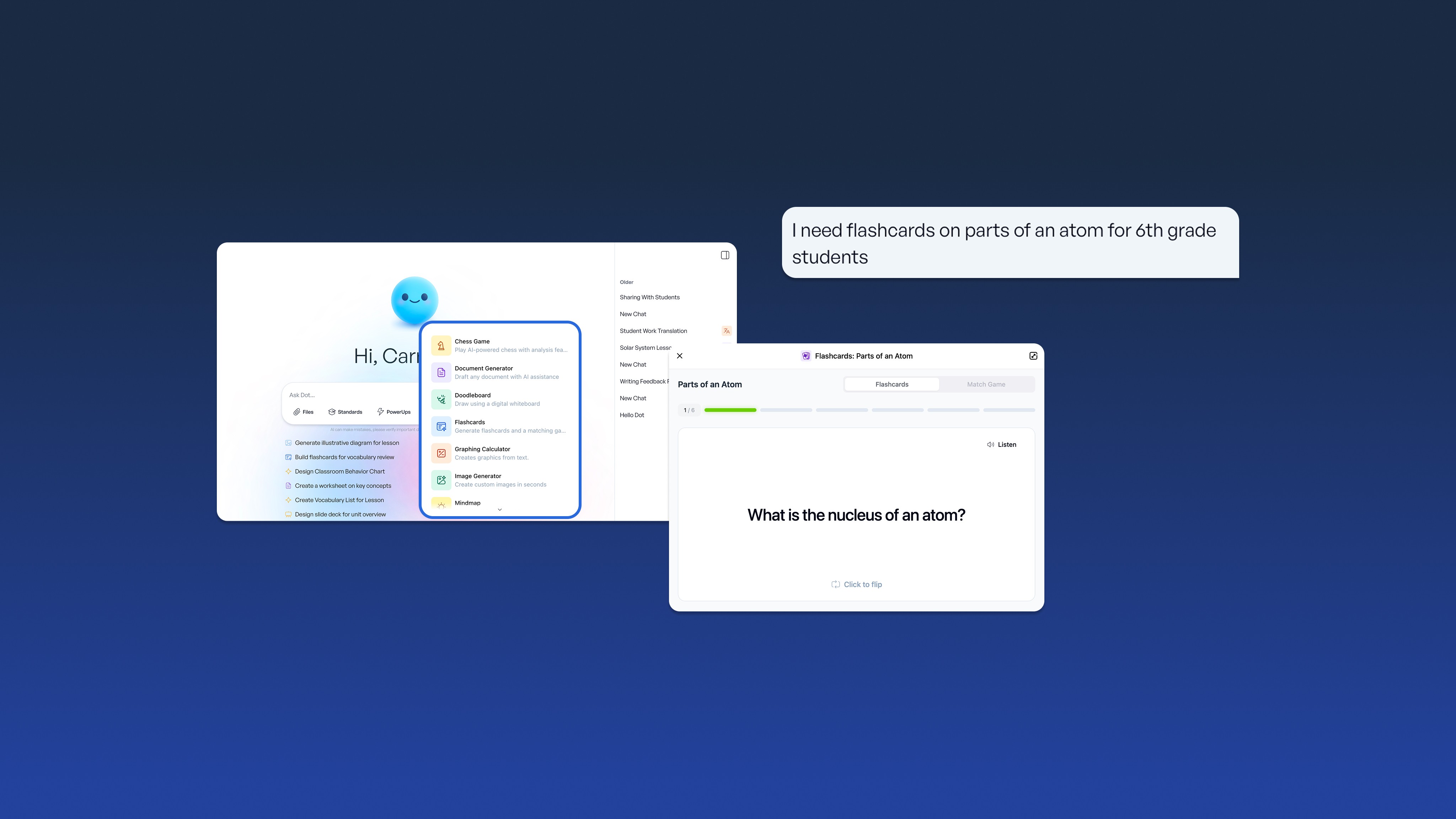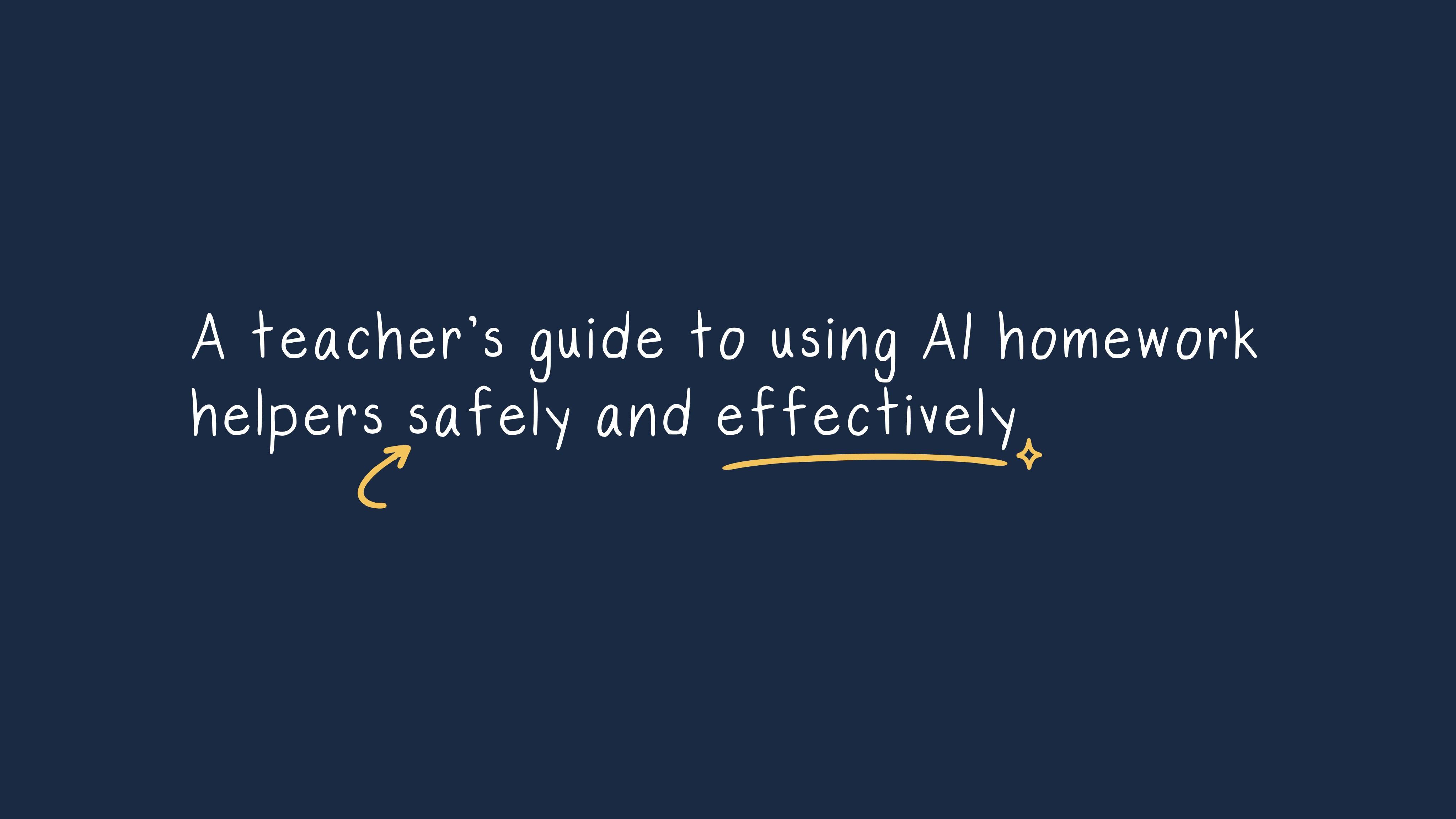Kasey Chambers
Feb 24, 2025
Get started
SchoolAI is free for teachers
As an instructional coach who developed the SchoolAI 4 C's framework, I'm excited to share how these essential competencies—Conscientious, Collaborative, Critical, and Creative—are transforming AI literacy in education. This framework emerged from real classroom experiences and provides a structured approach to help both educators and students harness AI's potential.
Why these 4 C's matter now
The framework's power lies in its simplicity and comprehensiveness. Each "C" addresses a crucial aspect of AI literacy:
Conscientious: Understanding AI's capabilities, limitations, and ethical implications
Collaborative: Using AI as a learning partner for personalized education
Critical: Analyzing AI output for accuracy and practicing safe interaction
Creative: Leveraging AI's unique capabilities to create something new
Let's explore how to bring each of these core competencies into your classroom.
Implementing the framework
Conscientious: Understanding AI's role
Being conscientious with AI means developing a deep understanding of what AI can and cannot do. This understanding goes beyond just knowing how to use AI tools—it's about recognizing their impact on learning, understanding the ethical implications of AI use, and teaching students to be responsible digital citizens. As educators, we need to help students understand that AI is a tool to enhance their learning, not replace their thinking. When we approach AI conscientiously, we create an environment where technology serves our educational goals while maintaining academic integrity and student agency.
Elementary Implementation (K-5):
Create an "AI Helper Rules" poster with student input
Compare AI to familiar helpers (like calculators or spell-check)
Use simple analogies to explain AI's role ("AI is like a helpful library assistant")
Practice digital citizenship with AI through guided activities
Introduce basic concepts of AI through storytelling and examples
Secondary Implementation (6-12):
Develop comprehensive AI use guidelines for different subjects
Analyze case studies of AI applications in various fields
Lead discussions on AI ethics and responsible innovation
Create subject-specific frameworks for appropriate AI use
Engage students in debates about AI's impact on society
Collaborative: AI as a learning partner
Collaboration with AI represents a new frontier in personalized learning. When we teach students to collaborate with AI, we show them how to leverage technology as an active learning partner that can adapt to their needs, provide instant feedback, and offer alternative perspectives. This collaboration isn't about dependency—it's about teaching students to engage with AI tools thoughtfully, using them to enhance their understanding and explore new learning possibilities. By modeling effective collaboration with AI, we help students develop skills that will serve them well academically and in future professional settings.
Elementary Applications (K-5):
Use AI as a "story buddy" for reading comprehension
Create simple group projects where AI helps brainstorm ideas
Practice basic research skills with AI guidance
Use AI to help explain difficult concepts in child-friendly terms
Design "AI and Me" activities where students learn collaboration
Secondary Applications (6-12):
Develop research projects using AI as a research partner
Create cross-disciplinary projects with AI support
Use AI for peer review and feedback sessions
Design complex problem-solving activities with AI assistance
Implement AI-supported project-based learning initiatives
Critical: Analyzing AI output
Developing critical thinking skills around AI is essential in today's information-rich environment. Students need to learn how to evaluate AI-generated content, identify potential biases, and verify information against reliable sources. This critical approach helps students understand that while AI can be a powerful tool, its outputs should always be examined thoughtfully and verified when necessary. Teaching critical interaction with AI helps students develop digital literacy skills that transfer across subjects and prepare them for a future where AI interaction will be commonplace.
Elementary Approaches (K-5):
Play "Fact or Fiction" games with AI-generated content
Create simple checklists for verifying AI information
Practice "Ask Three Questions" when using AI
Use visual aids to help evaluate AI responses
Implement "AI Detective" activities for basic fact-checking
Secondary Approaches (6-12):
Develop comprehensive AI output evaluation frameworks
Analyze AI-generated content for bias and accuracy
Create detailed verification protocols for different subjects
Practice advanced fact-checking using multiple sources
Study real-world examples of AI limitations and errors
Creative: Innovation with AI
Creativity with AI opens up new possibilities for student expression and problem-solving. When we teach creative AI use, we show students how to combine their unique ideas with AI's capabilities to produce something truly innovative. This isn't about letting AI do the creative work—it's about teaching students to use AI as a springboard for their own creativity, helping them explore new ideas and approaches they might not have considered otherwise. Through creative AI use, students learn to push boundaries while maintaining their authentic voice and vision.
Elementary Strategies (K-5):
Create AI-assisted storytelling projects
Use AI to explore "what if" scenarios in science
Design simple inventions with AI brainstorming help
Make art projects combining AI ideas with student creativity
Develop basic problem-solving activities using AI tools
Secondary Strategies (6-12):
Design innovative solutions to real-world problems using AI
Create multimedia projects combining AI and original content
Develop complex creative writing pieces with AI assistance
Build interdisciplinary projects using AI tools
Explore entrepreneurial ideas with AI support
Implementing the framework with SchoolAI
SchoolAI provides three powerful components that work together to support the implementation of the 4 C's framework in your classroom: Tools, Coteacher, and Spaces. Each component plays a unique role in helping both educators and students develop AI literacy.
SchoolAI Tools
Our content generation tools make it easy to create learning materials that align with the 4 C's framework. Need a lesson plan about responsible AI use? A reading passage about AI's role in scientific discovery? Or a rubric for evaluating AI-assisted work? These tools can generate grade-appropriate content that helps students understand and practice each component of the framework. For example, you might create a series of writing prompts that encourage students to think critically about AI-generated content or develop project guidelines that promote creative collaboration with AI tools.
SchoolAI Coteacher
Think of the Coteacher assistant as your personal AI literacy mentor. This thoughtful companion helps you develop lessons, brainstorm activities, and adapt your teaching strategies to incorporate AI effectively. Whether planning your first AI-enhanced lesson or looking to deepen your student's engagement with the 4 C's, the Coteacher can suggest grade-appropriate activities, offer implementation tips, and help you reflect on your practice. It's like having an experienced colleague available 24/7 to collaborate on AI integration strategies.
SchoolAI Spaces
Spaces provide monitored environments where students can interact directly with AI while practicing the 4 C's. These specialized chatbots offer students hands-on experience with AI in a safe, structured setting. As students engage with Spaces, they naturally develop conscientious habits, practice collaborative learning, build critical thinking skills, and explore creative applications. Teachers can monitor these interactions to ensure students meet objectives and develop healthy AI literacy skills. It's a perfect way to bridge the gap between learning about AI and learning with AI.
Best practices for implementation
Start with framework fundamentals
Begin with one C and gradually integrate others
Align framework elements with existing learning objectives
Build student confidence in each competency area
Model the 4 C's
Demonstrate conscientious AI use in your teaching
Show collaborative interactions with AI tools
Display critical analysis of AI outputs
Share creative applications of AI capabilities
Building lifelong AI literacy
The 4 C's framework isn't just about teaching AI skills—it's about preparing students for a future where AI is part of everyday life. Integrate these competencies naturally into your existing lessons rather than treating them as separate subjects. Have students reflect briefly on their AI use through simple prompts or quick journal entries. By making AI literacy a natural part of learning, we help students develop habits and mindsets that will serve them well beyond the classroom.
Free resources
📚 Download a free 4C's framework poster here
🔎 Use this SchoolAI Space to help students learn about the 4C's
Transform your teaching with AI-powered tools for personalized learning
Always free for teachers.
Recent posts
REFRESH: AI adoption challenges in schools: How to prepare staff and infrastructure
Jennifer Grimes
—
Dec 19, 2025
REFRESH: AI integration: Adding AI tools into your school’s existing technology
Stephanie Howell
—
Dec 19, 2025
Create lesson plans that work: Strategic planning for teachers
Cheska Robinson
—
Dec 18, 2025
A teacher’s guide to using AI homework helpers safely and effectively
Heidi Morton
—
Dec 18, 2025





